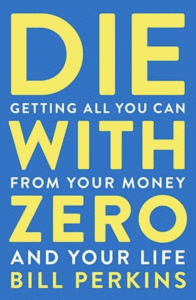ZBAL ETF is a multi-asset ETF providing exposure to equity and fixed income securities.
The BMO ETF offers moderate long-term capital growth as well as income to investors. ZBAL ETF provides exposure to a portfolio of global equity and fixed income ETFs.
It is professionally managed by BMO Global Asset Management.
Pros of Vanguard ZBAL ETF
- Inexpensive ETF with an MER of 0.20%.
- Index-based asset allocation
- Continuously monitored and rebalanced quarterly.
- ZBAL provides exposure to ETFs that are diversified across regions and asset classes.
Cons of Vanguard ZBAL ETF
- Provides exposure to equity ETFs managed only by BMO.
- A small ETF by Net Assets
BMO ZBAL ETF Facts
- Inception Date: February 15, 2019
- Benchmark: None
- Net Assets: $106M
- MER: 0.20%
- Distribution Yield: 2.50%
- Dividend Schedule: Quarterly
BMO ZBAL ETF MER – Management Expense Ratio
ZBAL’s management fee stands at 0.18% and MER is 0.20%. Its contemporaries Vanguard’s VBAL, iShares XBAL, and Horizon’s HBAL have MERs of 0.25%, 0.20%, and 0.15%, respectively.
While the MER differs, don’t invest based on MER alone, look at the Net Assets, or NAV, so that you have a more easily traded ETF.
The MER is what BMO takes to manage the fund for you. It’s much cheaper than mutual funds and in some cases cheaper than investing on your own.
Mutual funds can charge over 2% and it robs you of your returns. It’s time to ditch your mutual funds and switch to ETF ASAP. Many brokers such as Questrade offer free ETFs. Couple the free ETFs with low MER and you are ahead of many.
BMO ZBAL ETF Performance
The annual rate of return for BMO ZBAL ETF since inception is 9.87%. It has underperformed the broader S&P500 index in the last two years.
My opinion is that investing in the S&P500 is simple and works. The only question is whether you hedge or not.
The debare over CAD-Hedged or not is out there and most of it is based on your understanding and expectation of the USD currency. It’s not worth fussing over it in my opinion.
Take your TFSA account as an example. The rules are the same for everyone and I mean everyone. The growth is ultimately a factor of your investment performance provided you make your TFSA contribution limit every year. The annual performance of an ETF matters as you can see below the growth over 20+ years.
BMO ZBAL ETF Holdings
ZBAL ETF invests ~60% in equities and ~40% in fixed income.
Its top four holdings constitute ~80% of the total fund. The ETF also has a very small cash holding (~0.15%).
By industries, financials, technology, consumer cyclical, healthcare and industrials are ZBAL’s largest allocations.
| wdt_ID | Sector | Ratio |
|---|---|---|
| 1 | ZSP - BMO S&P 500 INDEX ETF | 25.05 |
| 3 | ZEA - BMO MSCI EAFE INDEX ETF | 13.15 |
| 4 | ZCN - BMO S&P/TSX CAPPED COMPOSITE INDEX ETF | 15.47 |
| 5 | ZMU - BMO MID-TERM US IG CORPORATE BOND HEDGED TO CAD INDEX ETF | 3.95 |
| 6 | ZGB - BMO GOVERNMENT BOND INDEX ETF | 7.48 |
| 7 | ||
| 9 | ZEM - BMO MSCI EMERGING MARKETS INDEX ETF | 5.48 |
| 12 | ZAG - BMO AGGREGATE BOND INDEX ETF | 27.06 |
| 13 | ZMID - BMO S&P US MID CAP INDEX ETF | 1.56 |
| 14 | ZSML - BMO S&P US SMALL CAP INDEX ETF | 0.67 |
Why hold BMO ZBAL ETF
ZBAL offers a balanced allocation of 60% equity and 40% bonds. It may be what you are looking for and it could be a good fit.
Should you go with VBAL or ZBAL? I say you pick the VBAL ETF due to the Net Asset Value. ZBAL is too small for my liking. VBAL is in fact 10 times bigger.
The ETF provides a good opportunity to long-term investors who want to limit their investment risk, as opposed to investing 100% either in equity or in bonds. Its fees, automatic portfolio rebalance, and asset and region diversification is cherry on top.
If you want the dividends, it’s not clear you will get the same growth but the the best banks and the best utility stocks will give you more income.


